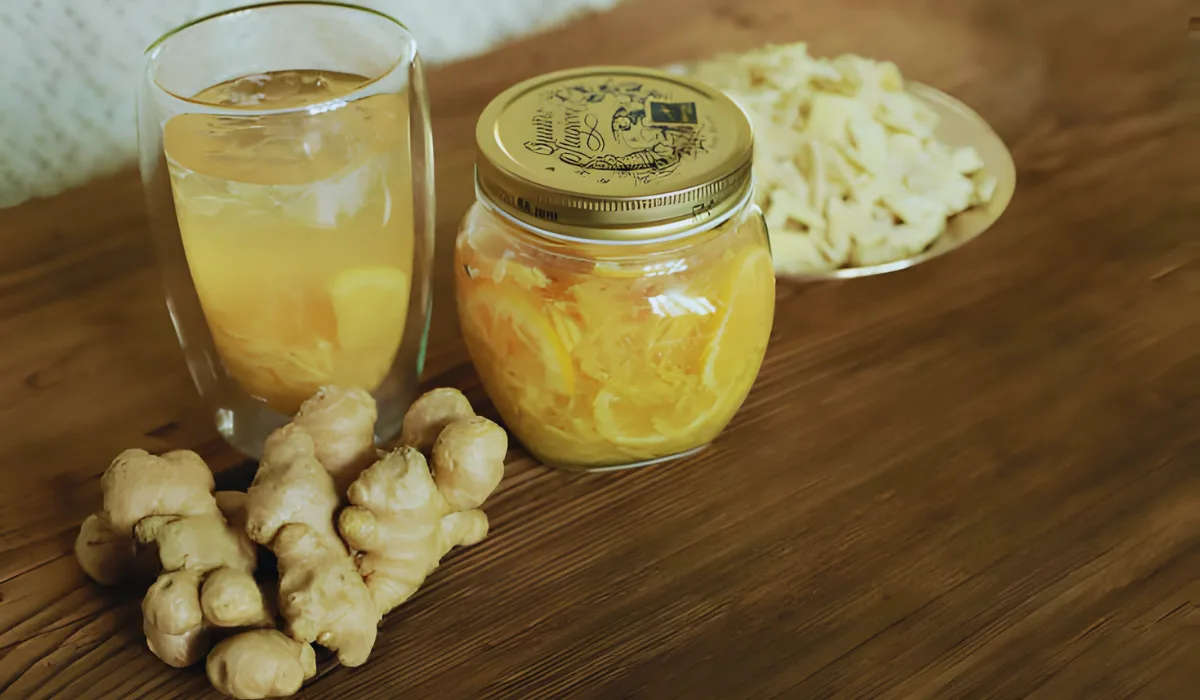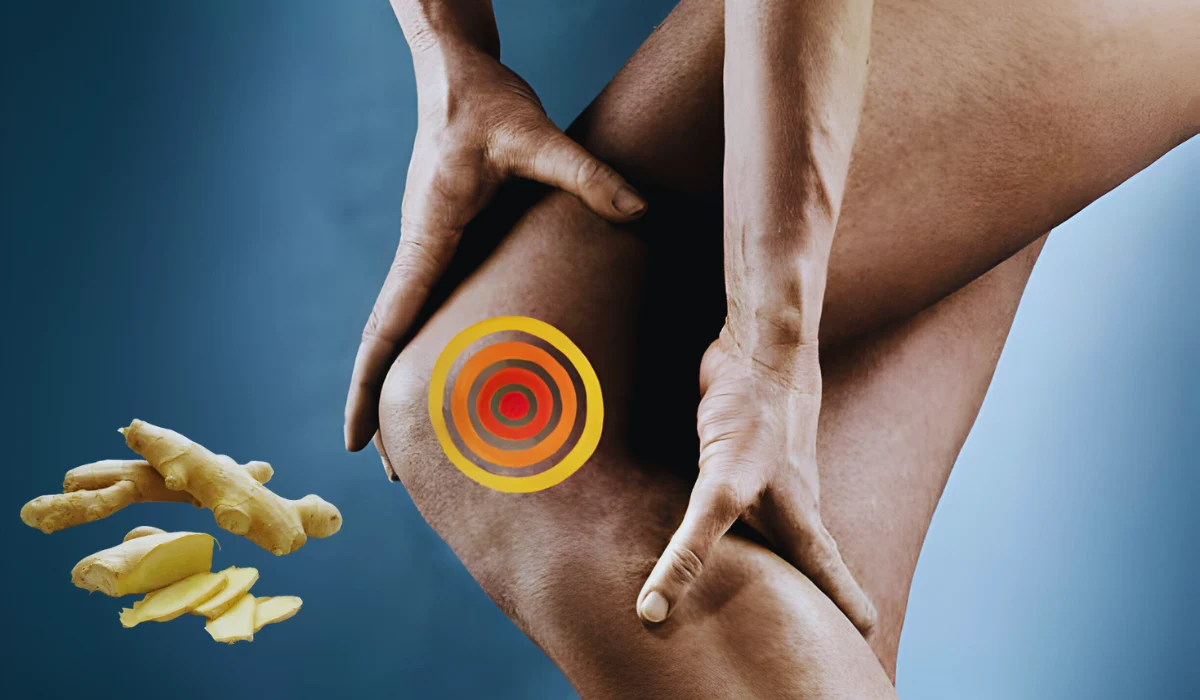How To Make Ginger Poultice For Muscle Pain And Inflammation?
Joint pain can be a debilitating condition, causing discomfort, stiffness, and reduced mobility. While conventional treatments like pain medication and physical therapy can provide relief, many people are turning to natural remedies as a complementary approach. One such remedy that has gained significant attention is the use of a ginger poultice for joint pain. Ginger,…

Disclaimer: This article has been generated with the assistance of AI tools. While our research team has fact-checked the content, readers should independently verify information for accuracy and reliability.
Joint pain can be a debilitating condition, causing discomfort, stiffness, and reduced mobility. While conventional treatments like pain medication and physical therapy can provide relief, many people are turning to natural remedies as a complementary approach. One such remedy that has gained significant attention is the use of a ginger poultice for joint pain.
Ginger, a versatile root with a distinct flavor and aroma, has long been celebrated for its wide-ranging health benefits. Interestingly, this humble ingredient may hold the key to soothing joint discomfort and improving overall joint health.
In this article, we’ll explore the process of making ginger poultice, understand how it works to alleviate joint pain and delve into the scientific evidence supporting its use.
Ginger Poultice For Muscle Pain: Easy Home Therapy Recipe

Creating a ginger poultice is a straightforward process that can be done in the comfort of your own home. Here’s what you’ll need:
Ingredients:
- Fresh ginger root (2-3 inches)
- Cheesecloth or muslin cloth
- Warm water
Instructions:
- Wash the ginger root and peel it if desired.
- Grate or finely chop the ginger to create a paste-like consistency.
- Place the grated ginger in the center of a piece of cheesecloth or muslin cloth.
- Gather the edges of the cloth and tie it securely to create a poultice.
- Dip the poultice in warm water, making sure it’s thoroughly moistened but not dripping wet.
- Apply the warm ginger poultice directly to the affected joint, securing it in place with a bandage or wrap.
Targeting Joint Pain: How Ginger Works?
Ginger’s ability to alleviate joint pain can be attributed to its potent anti-inflammatory and analgesic (pain-relieving) properties. The active compounds in ginger, such as gingerol, shogaol, and zingerone, have been shown to inhibit the production of inflammatory substances, including prostaglandins and leukotrienes.
When applied topically as a poultice, the ginger compounds are absorbed through the skin, reaching the affected joint and providing targeted relief. The warmth of the poultice also helps to increase blood flow to the area, which can further aid in the reduction of inflammation and pain.
Furthermore, ginger is believed to possess analgesic properties, meaning it can help block the transmission of pain signals to the brain. This dual-action approach of reducing inflammation and inhibiting pain perception makes ginger a powerful natural remedy for joint pain.
Scientific Evidence: Support For Ginger’s Pain-Relieving Properties
The use of ginger for joint pain relief has been the subject of numerous scientific studies, and the results are quite promising. A systematic review and meta-analysis published in the Journal of Herbal Medicine examined the effectiveness of ginger in managing osteoarthritis, a common form of joint degeneration.
The researchers found that ginger supplementation significantly reduced pain and improved physical function in individuals with osteoarthritis, with the topical application of ginger being particularly effective.
Another study published in the Journal of Traditional and Complementary Medicine explored the use of ginger-based ointment in the management of knee osteoarthritis. The results showed that the ginger-based ointment was more effective in reducing pain and improving physical function compared to a placebo ointment.
Interestingly, the pain-relieving effects of ginger have also been observed in other types of joint pain, such as those associated with rheumatoid arthritis and muscle soreness. These findings suggest that ginger’s anti-inflammatory and analgesic properties make it a versatile natural remedy for a wide range of joint and muscle-related discomforts.
Using Ginger Poultice For Muscle Pain
While the primary focus of this article has been on the use of ginger poultices for joint pain, it’s worth noting that this remedy can also be effective in addressing muscle pain and discomfort. Muscle tension, stiffness, and soreness can often accompany joint pain, and the topical application of ginger poultice can help provide relief in these cases as well.
The warming and pain-relieving properties of ginger can help to relax tense muscles, improve blood circulation, and alleviate the discomfort associated with muscle strain or overuse. Additionally, the anti-inflammatory effects of ginger may aid in the recovery process, reducing the duration and severity of muscle-related pain.
Conclusion
The use of ginger poultice for joint pain is a natural and effective way to address this common affliction. By harnessing the powerful anti-inflammatory and analgesic properties of ginger, this simple remedy can provide targeted relief and support overall joint health.
With the growing body of scientific evidence supporting the efficacy of ginger for joint pain management, it’s no wonder that more and more people are turning to this natural solution.
Whether you’re dealing with osteoarthritis, rheumatoid arthritis, or general joint discomfort, incorporating ginger poultice into your self-care routine may be a valuable addition to your pain management strategy.
By understanding the process of making and using this natural remedy, you can take an active role in alleviating your joint pain and improving your overall quality of life.
FAQs
A: It is generally recommended to apply the ginger poultice 1-2 times per day, or as needed for pain relief. Leaving the poultice on for 20-30 minutes each time can help maximize the benefits.
A: While dried ginger can be used, fresh ginger is generally more effective for creating a poultice. The fresh ginger root contains higher concentrations of the active compounds that provide the anti-inflammatory and pain-relieving effects.
A: Ginger is generally safe for topical use, but it’s important to avoid applying the poultice to broken skin or sensitive areas. If you experience any skin irritation or discomfort, discontinue use and consult your healthcare provider.
A: Yes, the ginger poultice can be beneficial for addressing muscle pain and discomfort as well. The warming and anti-inflammatory properties of ginger can help soothe muscle tension and promote healing.
Natalie Smith
Natalie Smith is a highly respected Osteopath with over 15 years of experience in treating a wide range of musculoskeletal conditions. She graduated from the British School of Osteopathy with a Master’s degree in Osteopathic Medicine and is a registered member of the General Osteopathic Council. Natalie’s expertise spans the diagnosis and treatment of issues affecting the muscles, bones, joints, and connective tissues. She utilizes a holistic, patient-centered approach, combining manual techniques such as spinal manipulation, soft tissue massage, and joint mobilization to alleviate pain and restore optimal function. Passionate about educating her patients, Natalie frequently speaks at local health workshops and has authored articles on osteopathic care for several respected medical journals. Her commitment to ongoing professional development ensures she remains at the forefront of the latest advancements in the field of osteopathy.
